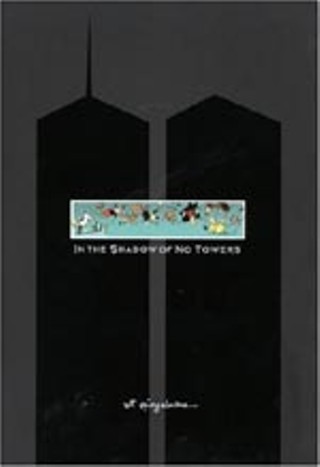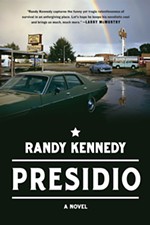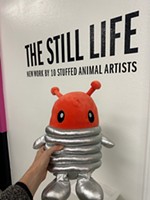Book Review: Readings
Art Spiegelman
Reviewed by Wayne Alan Brenner, Fri., Sept. 10, 2004

In the Shadow of No Towers
by Art SpiegelmanPantheon, 34 pp., $20
Ironic, isn't it, how New York's World Trade Center towers – destroyed by terrorists on, you'll recall, September 11, 2001 – resembled a big numeral 11?
That's purely visual irony, of course, something we can contemplate a bit less uneasily years later, especially if we didn't live in the Big Apple when the towers fell. But if we, like Art Spiegelman, had lived in NYC at the time, if we had kids going to school a block or two away from the burning, falling towers, we'd likely have little room for irony. But if we were Art Spiegelman, if we were that talented former editor of comix anthology Raw, that creator of the Pulitzer-winning Maus, that frequent contributor of cover art to The New Yorker; if we were him, we'd likely produce a visual response of some kind. Spiegelman himself, who remains a dedicated Gothamite, certainly has.
In the Shadow of No Towers has been much anticipated, and its arrival causes no disappointment. Printed in full color – whether muted to a pastel whisper or amplified to a garish graphic scream – on glossy sheets thick as the pages of a toddler's book and tabloid-sized when opened, Spiegelman's response is an invigorating obstacle course for the eyes. It's a workout for the reader's mind, too, as the artist has ditched his recent, straightforward narrative style to return to the more complex architecture of his days as an underground cartoonist.
Of course, it's not that Spiegelman was bored with comix-as-usual; it's that he was – and still is – jarred by his WTC experience; and the overlapping narratives, the fractured panel layouts and stylistic contrasts of In the Shadow of No Towers work to similarly jar the reader. They also jar the deep history of New York newspaper comics: Characters from the past are mixed into the artist's response, as if they – Happy Hooligan, Ignatz Mouse, the Katzenjammer Kids, and others – had to deal with the towers crashing into their reality. (At book's end, a few vintage comic broadsheets – a "Little Nemo in Slumberland" resonating especially well – are reprinted in full.)
A gorgeously graphic document like this response-to-tragedy from a major talent like Spiegelman can make you think that, OK, maybe the terrorists haven't already won.










